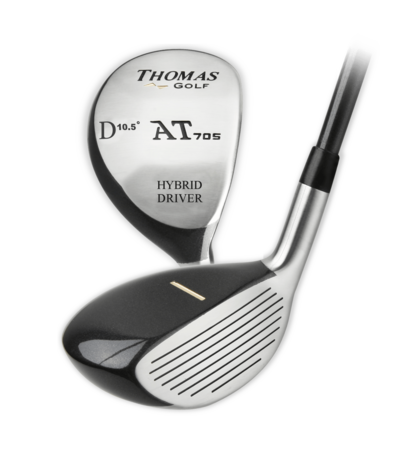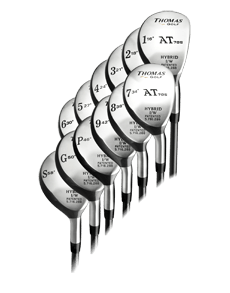

Golfers are always seeking ways to improve their game, and one aspect they often look into is the equipment they use. Fairway woods are an essential part of a golfer's arsenal, especially when it comes to longer shots from the fairway.
The center of gravity (CG) of a golf club plays a crucial role in determining the launch conditions of the ball, including trajectory, spin, and overall distance. It is the point within the clubhead where the weight is evenly distributed. Traditionally, fairway woods have had a higher CG, which resulted in higher ball flights.
However, advancements in golf club technology have led to fairway woods with a lower CG. The question is, can these lower CG fairway woods improve the launch conditions for golfers?
Firstly, let's understand how a lower CG affects the launch conditions. When the CG is lowered in a fairway wood, it shifts the weight lower in the clubhead, which in turn lowers the ball's launch angle. A lower launch angle can be advantageous for several reasons.
One benefit is that a lower launch angle can help golfers achieve a more penetrating ball flight, which ultimately results in additional distance. The reduced launch angle reduces the amount of backspin on the ball, allowing it to travel farther once it lands. This can be particularly helpful when golfers need to navigate windy conditions or hit the ball under obstacles.
A lower CG also aids in optimizing launch conditions for golfers with slower swing speeds. Lowering the CG helps players to launch the ball higher, providing them with more carry distance and reducing the rollout. This can be beneficial for golfers with slower swing speeds as they can achieve a higher launch angle that carries the ball over hazards and maximizes distance.
Additionally, fairway woods with a lower CG can enhance forgiveness. When the CG is positioned lower, it increases the moment of inertia (MOI) of the clubhead, making it more forgiving on off-center hits. This means that even if you don't hit the ball perfectly in the center of the clubface, a fairway wood with a lower CG can help mitigate the loss of distance and accuracy. This forgiveness can make a significant difference, especially for amateur golfers.
It is worth noting that while a lower CG can have advantages, it may not be suitable for every golfer. Golfers with high swing speeds already generate enough backspin, so a lower launch angle may not be beneficial. They might prefer fairway woods with a higher CG to optimize their launch conditions.
In conclusion, fairway woods with a lower CG can improve launch conditions for many golfers. The lower launch angle can result in a more penetrating ball flight, improved distance, and optimized launch conditions for slower swing speeds. Additionally, a lower CG contributes to forgiveness on off-center hits, providing more consistent and reliable performance. However, it is essential for golfers to consider their individual swing characteristics and preferences before opting for fairway woods with a lower CG.
Update: Can a fairway wood with a lower center of gravity (CG) improve launch conditions?
Yes, a fairway wood with a lower center of gravity (CG) can improve launch conditions. Here's how:
- Higher Launch Angle: A lower CG position in the clubhead promotes a higher launch angle for the golf ball. This is beneficial for achieving optimal trajectory and maximizing carry distance, especially for players with slower swing speeds or those who struggle to get the ball airborne.
- Reduced Backspin: With a lower CG, fairway woods tend to produce less backspin on shots. Lower backspin helps the ball penetrate through the air more efficiently, resulting in longer carry distances and increased roll upon landing.
- Increased Distance: By optimizing launch conditions with a lower CG, fairway woods can generate more distance off the tee or from the fairway. The combination of higher launch angles, reduced spin, and enhanced ball speed contributes to longer and more penetrating ball flights.
- Improved Forgiveness: Lowering the CG in a fairway wood increases the club's forgiveness on off-center hits. Shots struck lower on the clubface, which is a common mishit, tend to launch higher and with less spin, minimizing distance loss and maintaining accuracy.
- Better Overall Performance: Fairway woods with a lower CG offer improved overall performance, providing golfers with a more forgiving and consistent ball flight. Whether hitting off the tee or from the fairway, golfers can expect enhanced launch conditions and increased distance potential.
10 Q&A On Can a fairway wood with a lower center of gravity (CG) improve launch conditions?
- Q: What is the center of gravity (CG) in a golf club?
- A: The center of gravity (CG) is the point within the clubhead where the entire mass is evenly distributed. It plays a crucial role in determining the club's stability, launch characteristics, and overall performance.
- Q: How does a lower CG affect launch conditions in a fairway wood?
- A: A lower CG in a fairway wood promotes higher launch angles, reduced backspin, and increased distance potential by optimizing the ball's trajectory and flight characteristics.
- Q: Can a fairway wood with a lower CG help golfers who struggle to get the ball airborne?
- A: Yes, fairway woods with a lower CG are particularly beneficial for golfers who have difficulty achieving sufficient launch angles or struggle to get the ball airborne consistently.
- Q: What are the advantages of a higher launch angle in fairway wood shots?
- A: Higher launch angles result in steeper descent angles, which can help shots hold the green more effectively and reduce the risk of rolling through the back on approach shots.
- Q: Will a fairway wood with a lower CG produce less backspin?
- A: Yes, fairway woods with a lower CG typically produce less backspin, which can result in longer carry distances and increased roll upon landing.
- Q: Are there any drawbacks to using a fairway wood with a lower CG?
- A: While lower CG positions generally offer improved launch conditions, some golfers may find that they prefer the feel or workability of fairway woods with different CG locations.
- Q: Can adjusting the weight configuration of a fairway wood affect its CG?
- A: Yes, adjusting the weight configuration of a fairway wood can impact its CG position. Moving weight lower and farther back in the clubhead can lower the CG and improve launch conditions.
- Q: How can I determine if a fairway wood has a lower CG?
- A: Golf club manufacturers often provide information about CG location in product specifications. Additionally, club reviews and fitting sessions can offer insights into a club's launch characteristics and performance.
- Q: Can using a fairway wood with a lower CG improve accuracy?
- A: Yes, fairway woods with a lower CG can improve accuracy by promoting more consistent and forgiving ball flights, especially on off-center hits.
- Q: Should I prioritize a lower CG when choosing a fairway wood for improved launch conditions?
- A: While a lower CG is an essential factor to consider, it should be balanced with other factors such as feel, trajectory, and shot shape preferences. It's essential to find the right combination of features that suit your game and preferences for optimal performance.
-
Center of Gravity (CG) and Launch Conditions:
-
The CG is the point on the clubhead where the weight is concentrated. A lower CG placement in a fairway wood affects launch conditions in two ways:
-
Higher Launch Angle: With a lower CG, more weight sits below the point of impact. This creates a slight upward leverage effect at impact, promoting a higher launch angle compared to a fairway wood with a higher CG. A higher launch angle can be beneficial for getting the ball airborne more easily, especially for golfers with slower swing speeds or those who struggle to launch the ball high enough.
-
Potentially Increased Ball Speed: In some cases, a lower CG can improve ball speed. This is because it can optimize energy transfer from the clubhead to the ball at impact. However, this effect is more dependent on the overall club design and not a guaranteed benefit of a lower CG alone.
-
Benefits of a Higher Launch Angle:
- Increased Carry Distance: A higher launch angle allows the ball to stay in the air for a longer duration, maximizing carry distance even if the total distance (including roll) might not be significantly affected.
- Better Stopping Power on the Green: A higher launch angle can also lead to a steeper descent angle when the ball lands on the green. This can result in more stopping power and better greenside control.
Considerations:
- Swing Speed: Golfers with slower swing speeds benefit most from a lower CG fairway wood as it helps get the ball airborne more easily.
- Playing Conditions: Lower CG woods can be advantageous on windy days as the higher launch helps the ball cut through the wind better.
- Trajectory Preference: Some golfers might prefer a lower, more penetrating ball flight. If you already achieve a good launch angle with your current fairway wood, a lower CG model might not be necessary.
Overall:
A lower CG fairway wood is a great option for golfers who want to improve launch conditions by promoting a higher launch angle and potentially increasing ball speed. This can be particularly beneficial for those with slower swing speeds or those who struggle to get the ball airborne consistently. However, it's important to consider your swing speed, playing conditions, and personal preferences when choosing a fairway wood.
-





